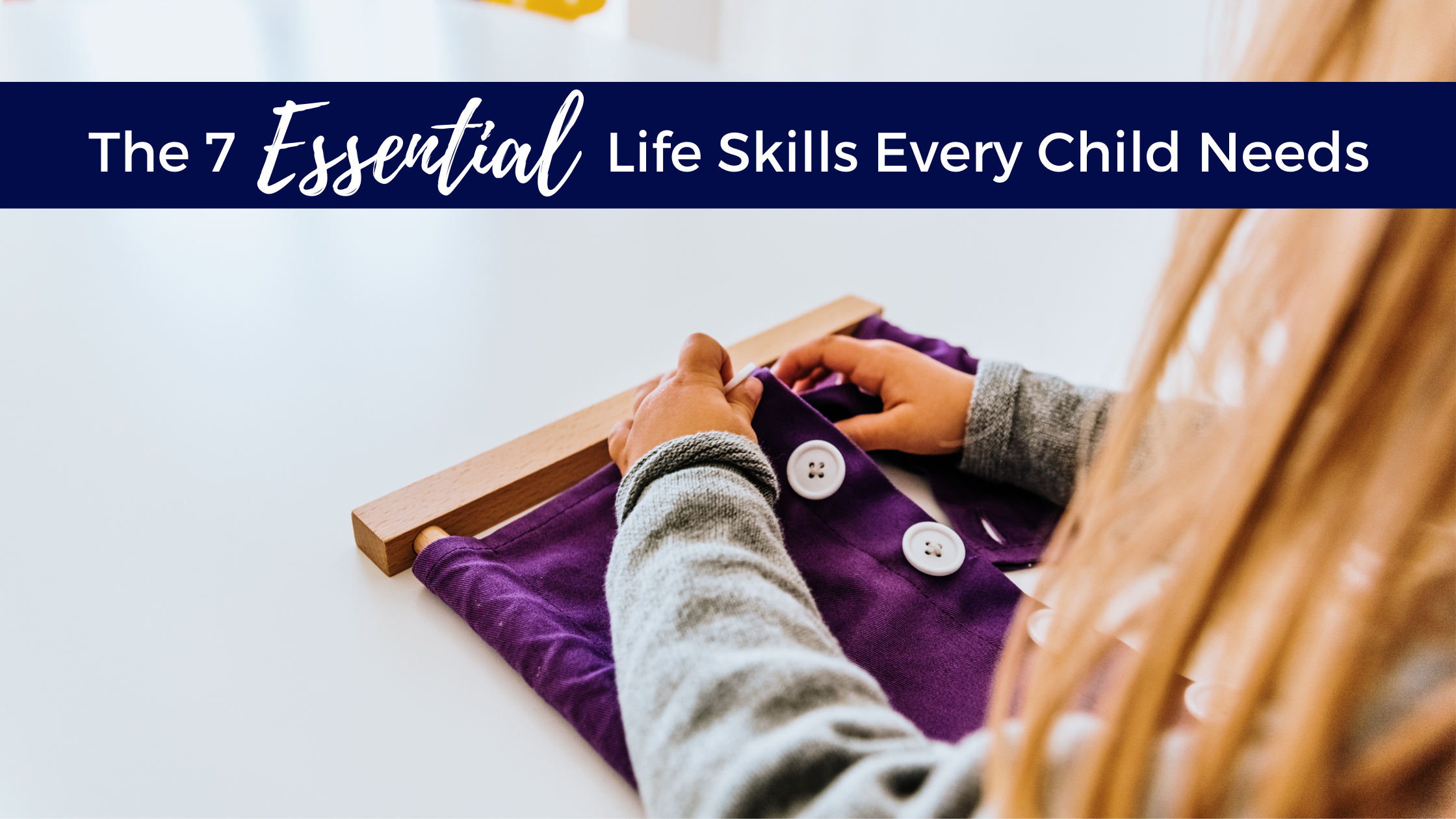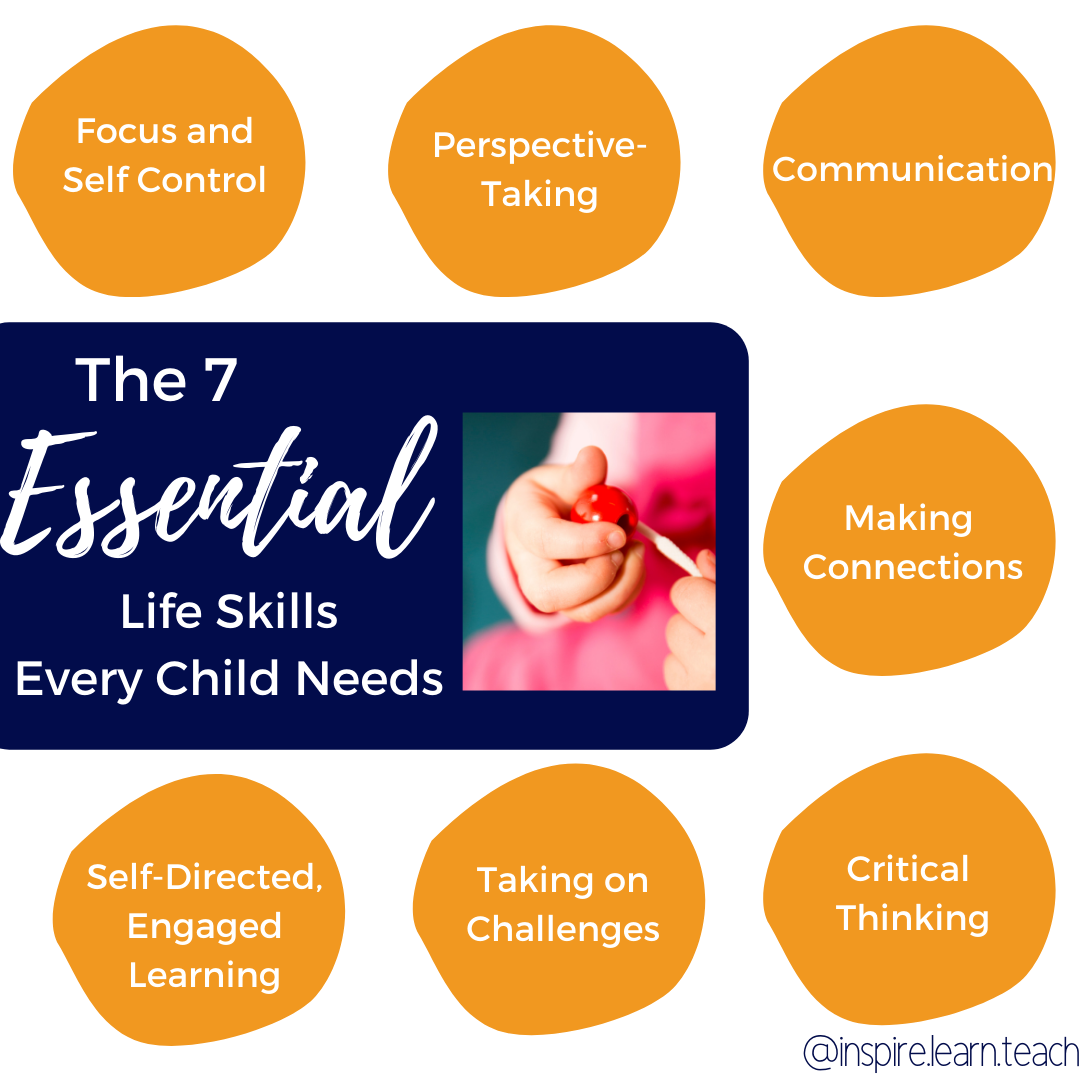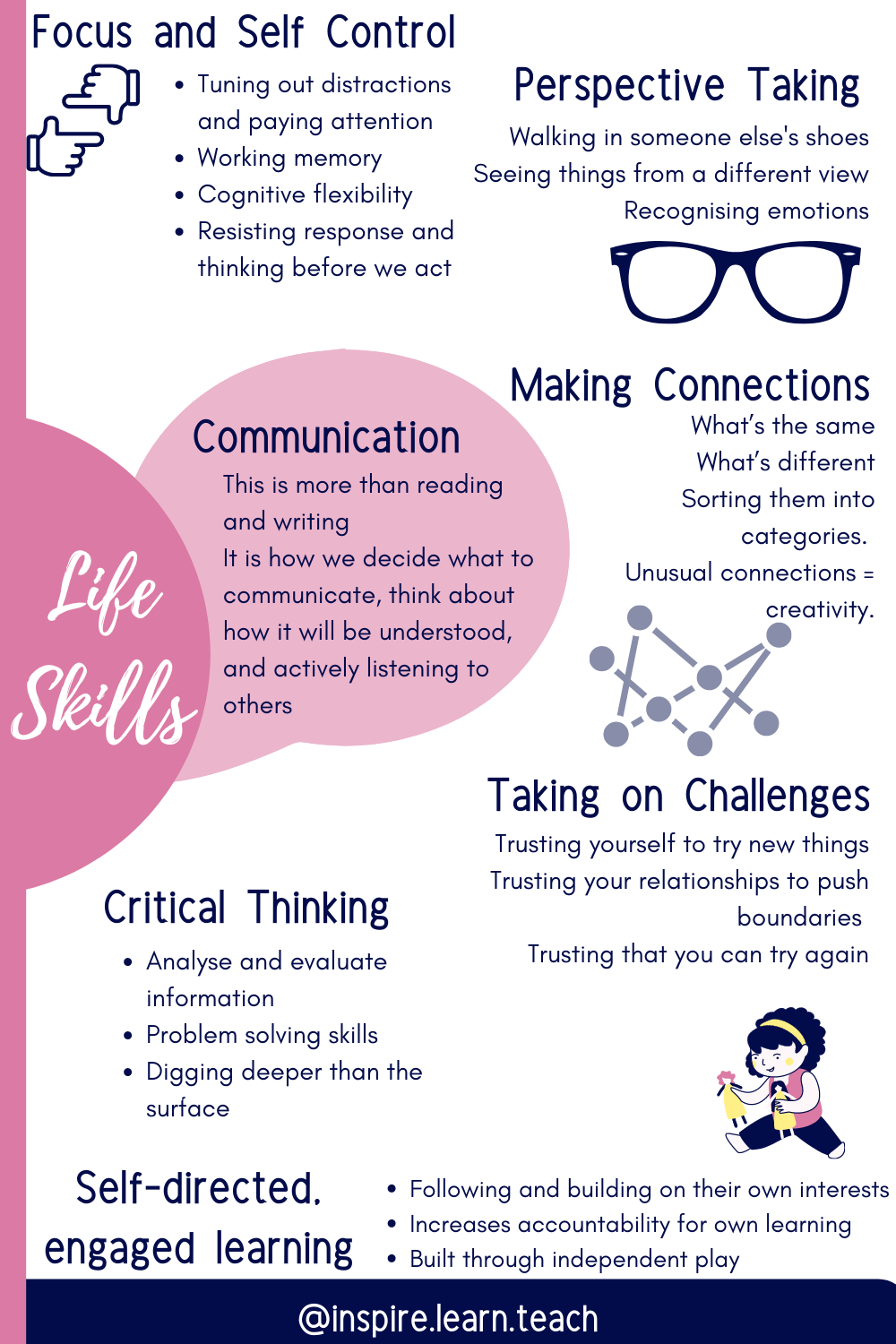Life Skills in Play : The 7 Essential Life Skills Every Child Needs
We all want our children to achieve their best and I am sure by now you have heard that play is one of the key ways we can build learning into the day and ensure success for our children. Sometimes though the focus can be quite narrow focusing only on literacy and numeracy success and that is why I am loving Ellen Galisky’s work in her book Mind in the Making.
On her website, Ellen describes the life skills as:
“Life skills are based on executive functions; they bring together our social, emotional and cognitive capacities to problem solve and achieve goals. Studies have found they are critical to success in school and life.”
These bring together a range of skills that allow for success in not only childhood but life as well and they continue to develop into adulthood. The best part is that this isnt about more set ups, more toys or more pressure. It is about uncovering the learning that is already there and bringing it to the forefront. In researching this topic, I stumbled on a review of Ellen’s work and my favourite concept here is that it isnt about guilting us as parents rather supporting child development across a range of areas.
So what are the 7 essential skills?
Focus and Self Control
Perspective-Taking
Communication
Making Connections
Critical Thinking
Taking on Challenges
Self-Directed, Engaged Learning
Focus and Self Control
Look I struggle as an adult to have singular focus without coffee and have zero self control with chocolate! But in a world filled with TV, phones, and passive toys that light and flash it is easy to become distracted and find yourself in the middle of sensory overload. To combat this we turn off the sound, sit on the floor and play together.
We can build this through allowing for it, not interrupting our children when they are deep in play, as this is where they are focused. To strengthen this it can be as simple as turning off all white noise when they are in this ‘zone’ and preventing any interruptions.
In building focus we are also looking to strengthen a child’s working memory where they are able to recall information and know when and where this is appropriate, as well as, how to be flexible with this knowledge as the play alters and altering with it.
The final part, and probably the hardest for our littles is self control and resisting the automatic response. That pausing before acting is a difficult muscle to build and we work on this through our boundary setting with sensory play. It doesn’t always work and is always developing … again I have zero control with chocolate … build this slowly over time by always reestablishing the boundaries.
Key Points
tuning out distractions and paying attention
working memory
cognitive flexibility
resisting response and thinking before we act
Simple ideas to try
Play 'I Spy"
Leave out words as you sing for your child to fill in
Set clear boundaries with play
Play "Simon Says"
Perspective-Taking
Walking in someone else’s shoes is never an easy feat and can take some practice. It is also something that builds with time, but is so important in developing empathy and can lead to children having less conflicts with others.
The first steps in developing this in being able to recognise emotions, labeling emotions in themselves and then others. Last month’s play pack focused on developing this skill and a snippet of the ideas you can try are below. This is a lifelong skill that won't develop in a moment with a few simple games, but will continually develop as children do.
Key Points
Walking in someone else's shoes
Seeing things from a different view
Recognising emotions
Simple ideas to try
Discuss the feelings of book characters
Act out emotions using prompts
Describe emotions throughout the day
Communication
Talking is only one side of communication, reading and writing is an even smaller part. Communication is a two way street where listening is key. Children can become unstuck when they don't feel heard or they are unsure on how to communicate what they want.
For children they learn to listen first then how to communicate their own needs. In building communication children first need to learn how to tune and listen clearly, consider games like Simon Says to develop this further and model this through intentionally listening when your child talks.
In talking children need to first decide what they would like to communicate, find the vocabulary and then decide how best to communicate to others based on how it will be understood by others. Developing this is critical through developing vocabulary and this isn't through elaborate set ups, rather more about rephrasing what your child is saying, speaking with a range of vocabulary and talking to your child not at them.
Key Points
This is more than reading and writing
It is how we decide what to communicate, think about how it will be understood, and actively listening to others
Simple ideas to try
Listen when your child talks to you
Paraphrase what your child says to check understanding and model language
Talk with not to your child
Making Connections
This is about drawing links and transferring knowledge from one situation to another. Questioning and talking with your child can really develop this, asking things such as “what is the same?”; “what is different?”. Ask your child to create categories for items (I would reach for the plastic animals here), and then let the create their own groups, then ask them to create new groups with the same animals … doing this allows for more creative solutions as unusual connections is where knowledge moves beyond recall to understanding.
Key Points
What’s the same
What’s different
Sorting them into categories.
Unusual connections = creativity
Simple ideas to try
Matching games - memory or snap
Play guess that song
Let children create own categories
Critical Thinking
Critical thinking is a higher order skill that develops over time as it requires children to consider what they know, analyse it and then evaluate the knowledge, the options and then solve problems.
This develops over time and needs to be promoted through providing space for children to test and try solutions, test out hypotheses and then evaluate the outcomes. The simplest way to develop this with your child without any set ups is by asking questions that start with “how” and “why” and by not answering every question but prompting your child to develop their own understandings of the world. As parents we dont need to provide all the answers and be the keeper of all the knowledge, when children develop their own knowledge it strengthens their ability to think critically and make connections!
Key Points
Analyse and evaluate information
Problem solving skills
Digging deeper than the surface
Simple ideas to try
"I wonder how we could solve this?"
"Why" and "How" questions
Avoid answering every question, provide space for your child to provide their own ideas
Taking on Challenges
“To play is to risk; to risk is to play.” — Diane Ackerman
Risk can be a four letter word … but if we unpack the risky play, a risk can be one of two things; a challenge or a hazard. A hazard is a danger and when we hear the term risk, as Mum’s we jump into protective mode, … but it can just be an emotional challenge or a physical one.
But in this there is also massive emotional risks in
trying something new
admitting your weakness
saying you need help
For our children to take risks, they need to trust us, trust us that we believe in them, that we have their back and that we will pick them up when and if they fall
Key Points
Trusting yourself to try new things
Trusting your relationships to push boundaries
Trusting that you can try again
Simple ideas to try
Provide only as much help as needed
Allow for risk taking in play
Sit on your hands as they try new things
Self-Directed, Engaged Learning
This is where child led play is key! Following your child, providing space and building on their interests allow for them to develop their own learning, connect and maintain focus.
This is independent play can be build through five key strategies; value their play, start young, create a prepared environment, provide one-on-one time, use simple invitations to play to spark an idea.
Key Points
Following and building on their own interests
Increases accountability for own learning
Built through independent play
Simple ideas to try
You can be in the same space
Start young
Provide open ended toys that can be used in a range of ways
If you have made it this far, what is your key takeaway? What is one thing that will stick with you as a parent in your parenting journey? The other thing I always consider when digesting new new information is what can I try tomorrow, one small step I could impliment straight away while it is fresh in my memory and inspired. For me, I am going to focus on critical thinking through asking ‘how’ and ‘why’ questions while allowing for connections by not answering every ‘why’ question I am asked.








